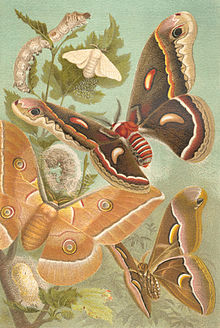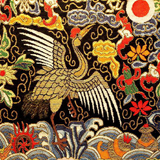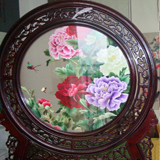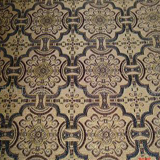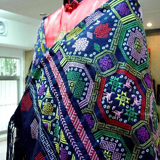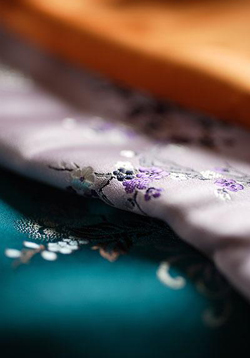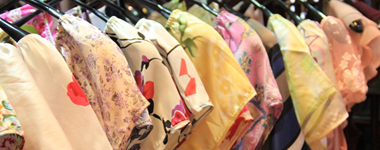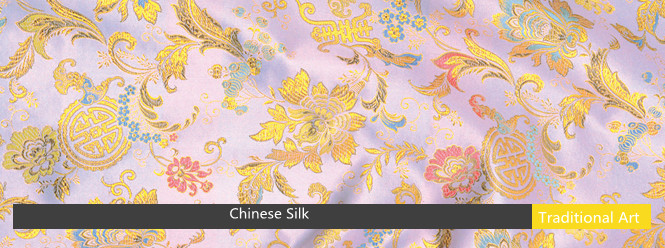
"A silkworm spins all its silk till its death and a candle won't stop its tears until it is fully burnt." This Tang poem accurately describes the property of the silkworm. Despite technological development, a silkworm can only produce a certain amount of silk---1000 meters (3280feet) in its lifespan of 28 days. The rarity of the raw material is the deciding factor of both the value and the mystery of silk.
What is Silk?
| | Silk is a natural protein fiber, some forms of which can be woven into textiles. The protein fiber of silk is composed mainly of fibroin and produced by certain insect larvae to form cocoons. The best-known type of silk is obtained from the cocoons of the larvae of the mulberry silkworm Bombyx mori reared in captivity (sericulture). Silks are produced by several other insects, but generally only the silk of moth caterpillars has been used for textile manufacturing. There has been some research into other silks, which differ at the molecular level.Many silks are mainly produced by the larvae of insects undergoing complete metamorphosis. But some adult insects such as webspinners produce silk, and some insects such as raspy crickets produce silk throughout their lives. Silk production also occurs in Hymenoptera (bees, wasps, and ants), silverfish, mayflies, thrips, leafhoppers, beetles, lacewings, fleas, flies and midges.Other types of arthropod produce silk, most notably various arachnids such as spiders.....View More |
| Four of the most important silk moths. |
-------------------------------------------------------------------------------------------------------------------------------------
Classification of China Silk Textiles
The silk textiles are generally known as ling (twill damask), luo (gauze), juan (silk tabby) and duan (satin). They are further subdivided into juan (silk tabby), qi (damask on tabby), luo (gauze), sha (plain gauze), ling (twill damask), jin (polychrome woven silk) and kesi (silk tapestry with cut designs). Today, according to the silk material, texture, weave structure and texture, the silk textiles can be divided into ling (twil damask), luo (gauze), juan (silk tabby), zhou (crepe), jin (brocade), duan (satin), ni (matelassé), fang (habotai), xiao (chiffon), ge (bengaline), rong (velvet), sha (plain gauze) and ti (crepons).....View More
Four Famous Brocades in China
| | | | |
| Yun Brocade | Shu Brocade | Song Brocade | Zhuang Brocade |
-------------------------------------------------------------------------------------------------------------------------------------
Function of Silk
Being a natural fiber, the silk has irreplaceable uniqueness and great vitality. The silk garment has certain health care function to human body:
| | First, it brings the pleasant sensation. Composed of azelon, the real silk has a good biocompatibility. The smooth surface makes the smallest friction coefficient of all types of ribers. Second, it has a good permeability and hygroscopicity. It contains 18 sorts of amino acid. It is regarded as the "Queen of Fiber" due to its good permeability and light absorbing ability. Third, it has excellent qualities of acoustic absorption, dust absorption and strongly heat-resistant. Fourth, it has the function of anti-ultraviolet radiation. The fibroin in it can well absorb the ultraviolet radiation. But after absorbing the ultraviolet radiation, the chemical changes will make it yellowing from day lighting. |
-------------------------------------------------------------------------------------------------------------------------------------
History of Chinese Silk
Legend has it that in ancient times, Lei Zu, the wife of Huang Di , taught people how to raise silkworms and how to extract the silk. The Warring States Period, the beginning of feudalist society in Chinese history, witnessed a prosperous time. The silk products excavated from Mawangdui Han Tomb are proof of the advanced skill and artistry of silk at this time.
Chinese characters including the component "silk" have the intonation of silk or its implication of fine and deep. The richness of color, texture, strength and beauty of silk make it the means to imply something is fine and impeccable. A woman's raven hair is referred to as 'black silk' ; tender feelings are 'feelings of silk' and the Chinese word for a lingering and emotive feeling contains the component of "silk", and even a flavor can be silky and smooth.....View More
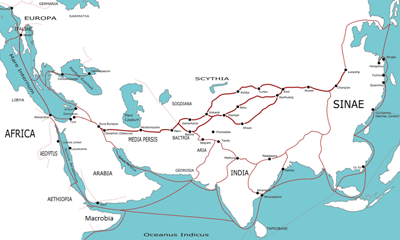
The main silk roads between 500 BC and 500 AD
-------------------------------------------------------------------------------------------------------------------------------------
Tips on Buying And Maintaining Silk
When come to China, many visitors would like to buy some souvenirs. The smooth silk product is certainly the best choice. Before buying them, it is always wise to learn the common sense of the silk product including the function, identification and maintenance.
The most common methods to identify real silk are handling, eye observation, inflammation and chemical coloring....View More
| Fiber | Touch the Flame | Away from the Flame | Smell When Burns | Feature of the Leftovers |
| Silk | Curl, melt, flame up | Burn slowly, extinguish sometimes | Hair burning | Crisp, loose and black granule |
| Cotton | Flame up instantly | Inflame instantly | Paper burning | Soft, fine, grayish black downy leftovers |
| Flax | Flame up instantly | Inflame instantly | Paper burning | Soft, fine, hoar downy leftovers |
| Fleece | Curl, melt, flame up | Burn slowly, extinguish sometimes | Hair burning | Crisp, loose and black hard coke |
| Azelon | Burn slowly with noise | Extinguish | Hair burning | Crisp, loose and black beadlike |
-------------------------------------------------------------------------------------------------------------------------------------
Silk in Modern Times
With its recent economic reforms, the People's Republic of China has become the world's largest silk producer. In 1996 it produced 58,000 tonnes out of a world production of 81,000, followed by India at 13,000 tonnes. Japanese production is now marginal, at only 2500 tonnes. Between 1995 and 1997 Chinese silk production went down 40% in an effort to raise prices, reminiscent of earlier shortages.
In December 2006 the General Assembly of the United Nations proclaimed 2009 to be the International Year of Natural Fibres, so as to raise the profile of silk and other natural fibres.
Written by Nicolas Yang
